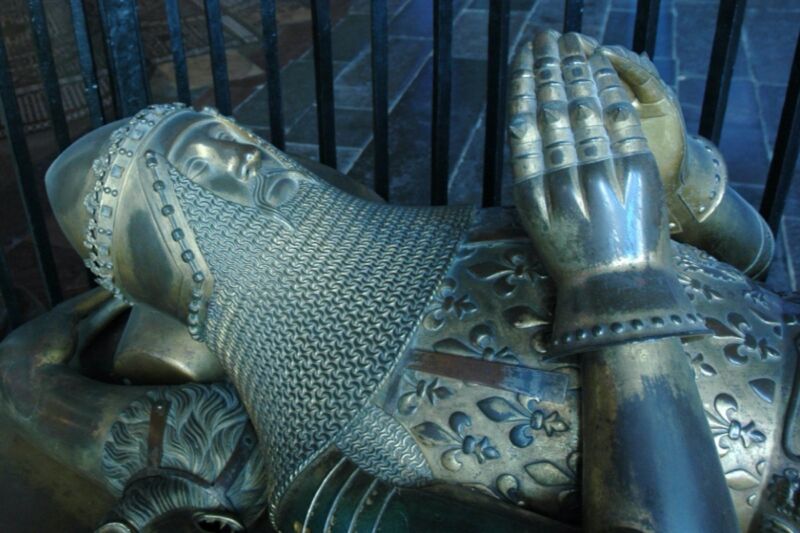
Enlarge / Effigy of Edward of Woodstock, aka the Black Prince, in Canterbury Cathedral. (credit: Josep Renalias/CC BY-SA 2.5)
Visitors to Canterbury Cathedral can view the effigy of a 14th century knight in full armor laid out on top of a marble tomb. It's the tomb of Edward of Woodstock, colloquially known as the Black Prince, and it's one of just six surviving large cast-metal sculptures from medieval England. Now, a team of researchers at The Courtauld Institute of Art has gotten the first glimpse inside the gilt-copper alloy effigy in 600 years, thanks to X-ray and medical imaging techniques. The researchers' findings were recently published in The Burlington Magazine.
"Until now, a lack of documents about the Black Prince's tomb and effigy has limited our understanding of their construction, chronology and patronage. So our scientific study of them offers a long-overdue opportunity to reassess the effigy as one of the country's most precious medieval sculptures,' said co-author Jessica Barker, a medievalist at The Courtauld. "By using the latest scientific technology and closely examining the effigy, we have discovered so much more about how it was cast, assembled and finished."
Edward of Woodstock was the eldest son of King Edward III and heir apparent to the throne. He was well-educated in philosophy and logic and well-trained in the art of war—skills that proved useful in this particular period of the Hundred Years' War, when invasion by the French was a constant threat. Edward's first foray into battle was at the vanguard of the famous Battle of Crécy in 1346, when he was just 16. Beset by a dangerous counterattack, the young knight sent word to his father requesting reinforcements. Edward III refused to give in to protective paternal instincts, declining the request and insisting he wanted his son to "prove his spurs" in battle.
No comments:
Post a Comment